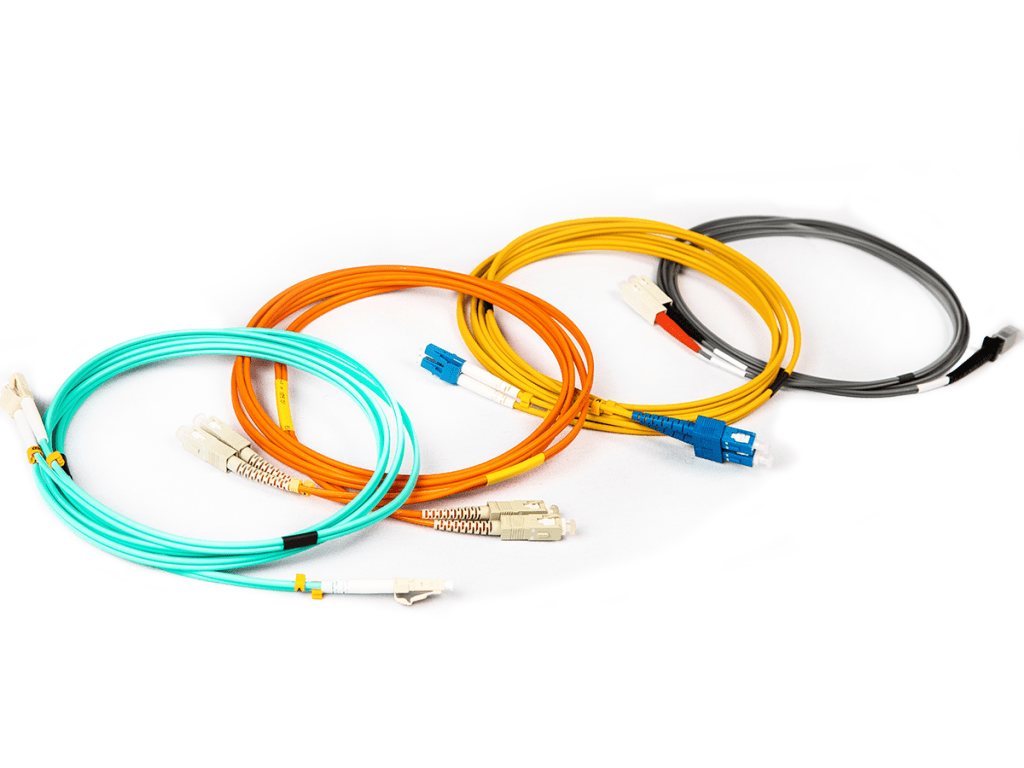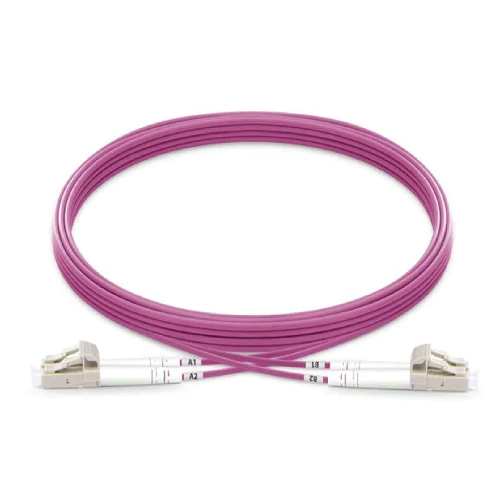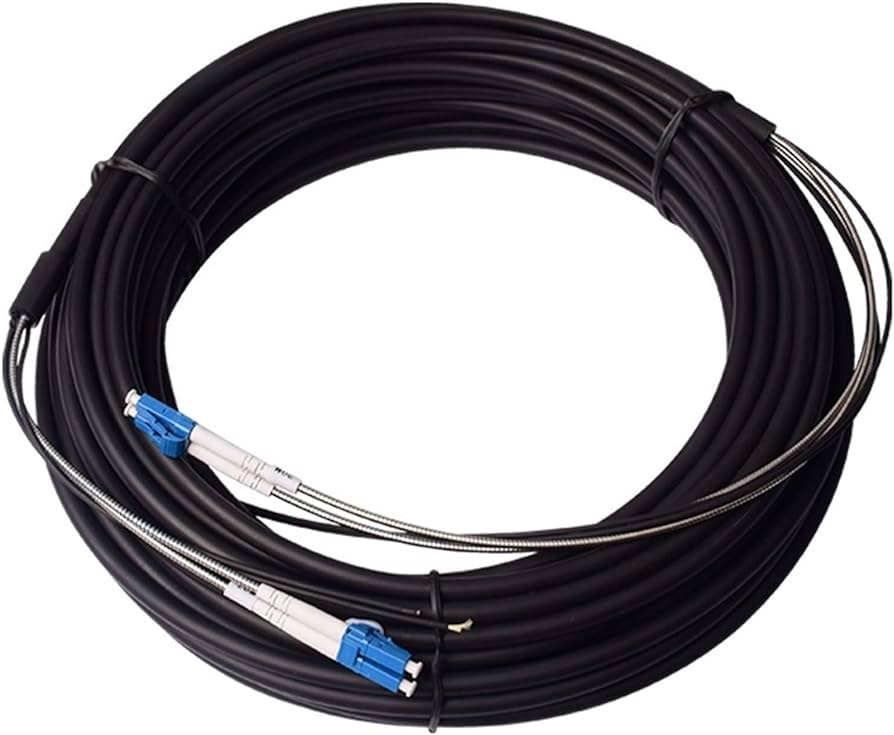Understanding the Differences Between OS1/OS2 and OM1/OM2 LC Duplex Patch Cables

Fiber Optic Cables
Importance of Understanding Fiber Optic Cables
Fiber optic cables are the backbone of modern network infrastructure, facilitating high-speed data transmission.
Network professionals must grasp the nuances between OS1/OS2 and OM1/OM2 LC duplex patch cables to make informed decisions.
The utilization of duplex connectors is pivotal in enabling seamless communication through fiber optic cables.
Cable Types
OS1/OS2 Cables
When it comes to fiber optic cables, OS1/OS2 cables are the go-to choice for single-mode fiber optic transmission. These cables are specifically designed for long-distance data transmission, making them ideal for applications where data needs to travel over extended distances without losing signal strength. The "OS" in OS1/OS2 stands for "optical single-mode," indicating that these cables are optimized for carrying a single ray of light over long distances.
One of the key features of OS1/OS2 cables is their ability to support higher bandwidths and transmit data over much longer distances compared to multimode fiber optic cables. This makes them well-suited for long-haul telecommunications and internet connectivity, where high-speed, reliable data transmission is crucial.
LC Connectors
Features of LC Connectors
When it comes to fiber optic communication, LC connectors stand out due to their small form factor and high-density connections in network applications. The compact design of LC connectors makes them ideal for environments where space is limited, allowing for more efficient use of available real estate within network infrastructure. Their small size also contributes to easier cable management and installation processes.
LC connectors are known for their reliable performance and ease of use. They are designed to ensure secure connections while minimizing signal loss, providing a stable and consistent data transmission experience. Additionally, the push-pull design of LC connectors allows for quick and easy insertion and removal, saving time during maintenance or reconfiguration tasks.

Connector Comparison
Duplex vs. Simplex Connectors
When comparing duplex and simplex connectors in fiber optic communication, it's essential to understand their distinct characteristics and functionalities:
Duplex Connectors: These connectors are designed to transmit signals in both directions simultaneously, making them suitable for bidirectional communication. They consist of two fibers within a single connector, allowing for the seamless transmission of data between connected devices. The duplex configuration is commonly used in applications where real-time data exchange or simultaneous transmission and reception are required.
Simplex Connectors: In contrast, simplex connectors can only transmit signals in one direction at a time. They feature a single fiber within the connector, limiting their functionality to unidirectional communication. While they may be more straightforward in design, they are not as versatile as duplex connectors when it comes to bidirectional data transmission.
Understanding the differences between these connector types is crucial for selecting the most appropriate solution based on specific networking requirements and operational needs.
OS1/OS2 vs. OM1/OM2 Connectors
When considering the choice between OS1/OS2 and OM1/OM2 connectors, it's important to note the following distinctions:
OS1/OS2 Connectors: These connectors are specifically designed for single-mode fibers, optimized for long-distance data transmission with minimal signal loss. They are well-suited for applications requiring high bandwidth over extended distances.
OM1/OM2 Connectors: On the other hand, OM1/OM2 connectors are tailored for multimode fibers, ideal for shorter distance transmissions within buildings or data centers. They offer cost-effective solutions for applications that do not require long-haul connectivity.
The selection between OS1/OS2 and OM1/OM2 connectors depends on the specific network requirements, including distance considerations and desired bandwidth capabilities.
Advantages and Applications
Advantages of Duplex Patch Cables
When it comes to fiber optic communication, duplex patch cables offer several advantages that make them a preferred choice in network setups:
Efficient Data Transmission: Duplex patch cables facilitate the simultaneous transmission of data in both directions, optimizing the efficiency of communication between connected devices. This bidirectional capability ensures seamless and reliable data transfer, enhancing overall network performance.
Suitability for High-Speed Applications: The design of duplex patch cables makes them well-suited for high-speed network applications where real-time data exchange is essential. Their ability to support rapid data transmission contributes to the smooth operation of advanced networking systems.
These advantages position duplex patch cables as valuable components in modern network infrastructure, providing the necessary support for demanding communication requirements.

Applications of LC Duplex Patch Cables
LC duplex patch cables find widespread applications across various networking environments due to their flexibility and high performance characteristics:
Data Centers: In data center settings, LC duplex patch cables are integral for establishing reliable connections between networking equipment, servers, and storage systems. Their versatility and efficiency contribute to the seamless flow of data within these critical facilities.
Telecommunication Networks: Telecommunication networks rely on LC duplex patch cables to enable efficient communication between different network elements. Their compact design and high-performance capabilities make them ideal for supporting the complex connectivity requirements of telecommunication infrastructures.
LAN Environments: Within local area networks (LANs), LC duplex patch cables play a crucial role in ensuring fast and dependable data transmission among interconnected devices. They provide the necessary agility and robustness to meet the demands of diverse LAN setups.
The adaptability and superior performance of LC duplex patch cables make them indispensable components in demanding network configurations.
Choosing the Right Duplex Connector
When deciding on the most suitable duplex connector for a network infrastructure, it's essential to consider the specific requirements and applications of the network. The choice between OS1/OS2 and OM1/OM2 LC duplex patch cables depends on factors such as distance considerations, bandwidth needs, and the nature of data transmission. LC duplex patch cables offer versatility and high performance, making them well-suited for diverse networking needs. Their adaptability and efficiency make them a preferred choice in various networking environments, including data centers, telecommunication networks, and LAN setups.
See Also
Maximizing Cost-Effectiveness with Quick Assembly Connectors for Round Drop Cables
Exploring Balanced and Unbalanced PLC Splitters in Telecommunication Infrastructure
Understanding ABS Module: A Key Component for FTTH Applications
Exploring the Options for Preconnectorized Drop Cables with SC APC Connectors in White Color
Exploring the Benefits of Yellow Cables with LSZH Sheath for Singlemode OS2 Fiber Optic Networks
About US
Follow Us
AnetFiber company's main products are indoor and outdoor optical fiber cables, outdoor waterproof pre-connected fiber-to-the-home products, PLC optical fiber splitters, optical fiber jumpers and pigtails, MTP®/MPO high-density big data product solutions, optical fiber field quick connectors and research and development molding, injection molding and production of optical fiber distribution boxes, optical fiber chassis cabinets, the market has expanded to the world, Europe, America, Asia, the Middle East and Latin America.
Address
Shenzhen City, Baoan District, Yanluo Street, Tangxiayong Community, Yangyong Industrial Road, Tonggangda New Energy Vehicle Park 406
Contacts
+86 199 2655 3586

